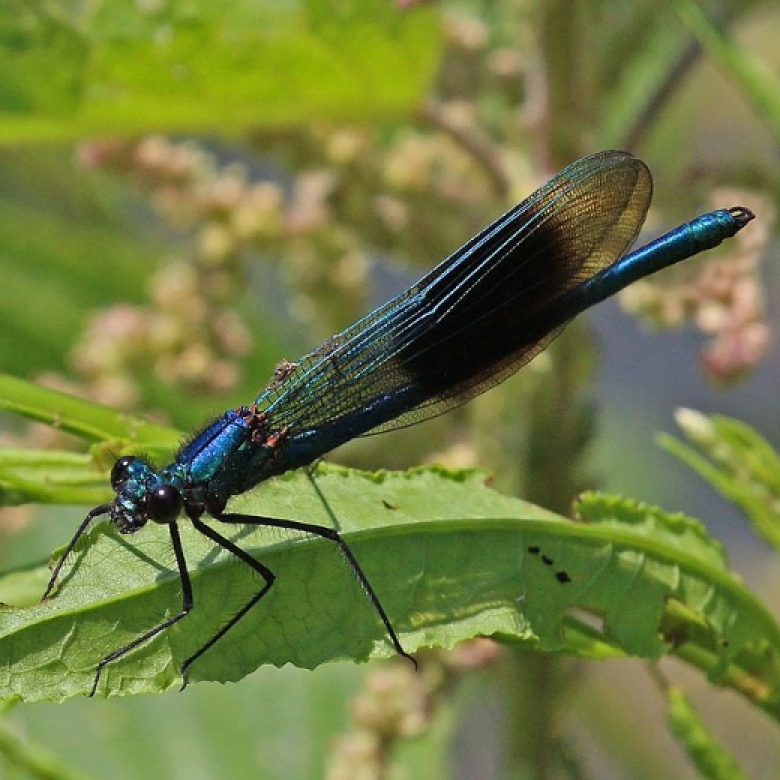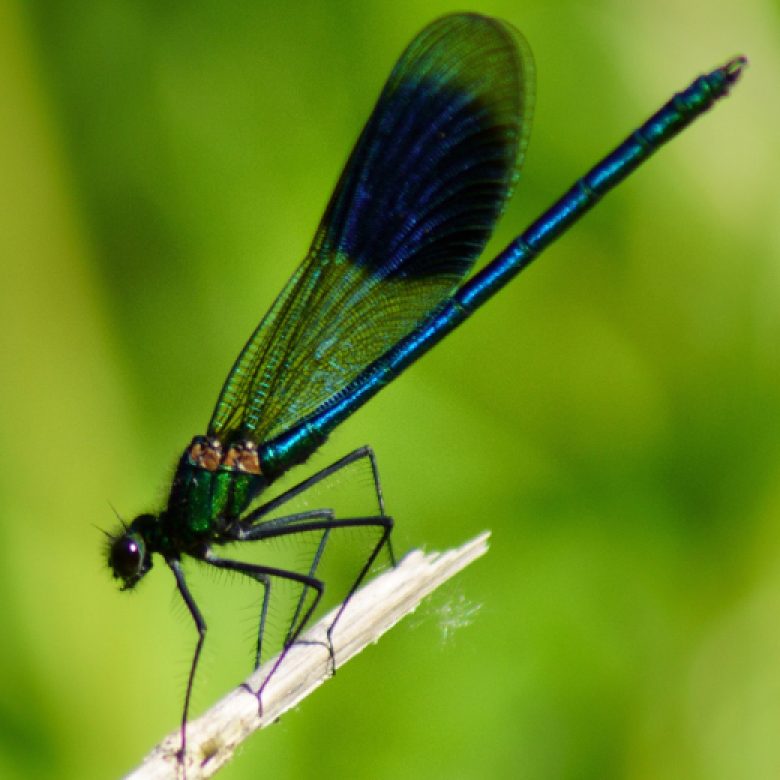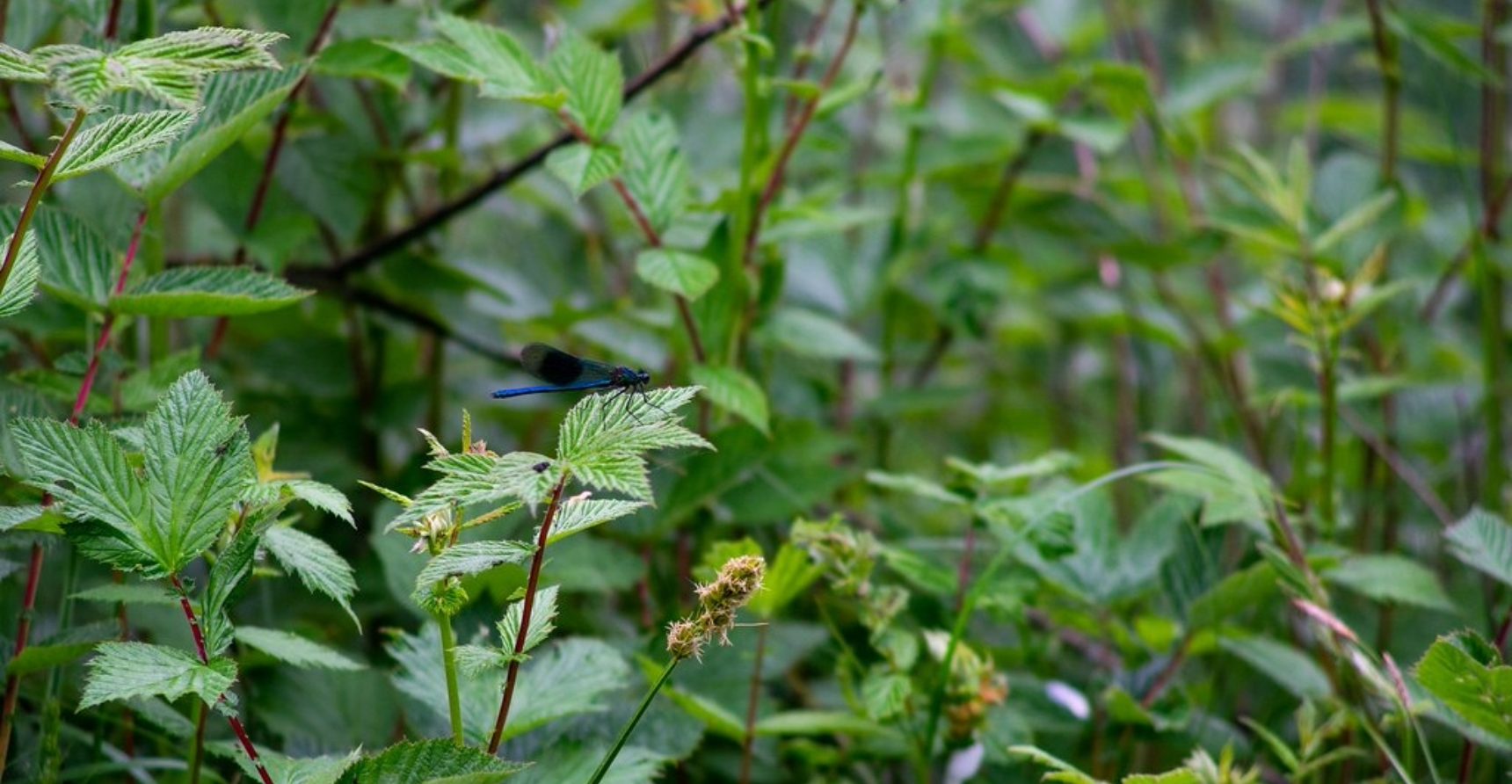Spotlight | Bring on the Blue Banded Demoiselle
30th November 2023
by Peter Morton
Here’s a species you’ve probably seen before down on the banks of the Thames. As they are one of the earliest species to see, I thought I’d look a little deeper at this seasonal signal that the finer weather is upon us.
The blue banded demoiselle, or Calopteryx splendens, is a captivating damselfly that graces the banks of slow-flowing streams and rivers across Eurasia. With its striking appearance and fascinating behaviours, this damselfly is one of the first to emerge and can often be seen in April and May.
One of the most distinctive features of the blue banded demoiselle is its striking appearance. Males boast translucent wings adorned with a broad, dark iridescent blue-black band. This vibrant band can appear even more dazzling in sunlight, particularly attractive to the females. In contrast, females have translucent, pale green iridescent wings with a white patch near the tip. They are quite large for damselflies and easy to spot flitting amongst the reeds.
These damselflies are often found in lush bankside plants and on floating vegetation, where they perform their distinctive fluttering flight. Unlike the rapid, darting flight of other damselflies, the blue banded demoiselle’s fluttering flight is used by males during courtship displays. This behaviour is not only fascinating to us but also a crucial part of their mating rituals.
Damselflies are carnivorous and primarily feed on small insects, such as mosquitoes and flies. By doing so, they play a vital role in controlling insect populations in their habitats.
The behind-the-scenes life cycle of the blue banded demoiselles is also quite interesting. Female damselflies lay their eggs by injecting them into plant stems under the surface of the water. The eggs take about two weeks to hatch, and the larvae take two years to develop, overwintering in the mud at the bottom of the rivers or ponds.
The lifespan of adult blue banded demoiselles is relatively short, typically lasting about a month during the summer. However, their larvae can live for up to two years before emerging as adults.
In addition to their ecological importance, blue banded demoiselles are a joy to see and not too skittery. Their fluttering flight, vibrant colours, and intriguing behaviours make them one of my favourites. Whether you’re watching a male perform his courtship display or observing a female laying her eggs, the blue banded demoiselle offers a glimpse into the wonders of nature.
The blue banded demoiselle is a fantastic species that enriches the biodiversity of riparian habitats. With their striking appearance, fascinating behaviours, and crucial role in controlling insect populations, these damselflies are truly a jewel of the natural world. So next time you’re down at Withymead, keep an eye out for these enchanting creatures and make the most of springtime with the blue banded demoiselle.
Image credits:
(L) Charles J Sharp, CC BY-SA 4.0
(R) Pete Morton
(T) BLloydT, CC BY-SA 4.0


30th March 2025
by Pete Morton




